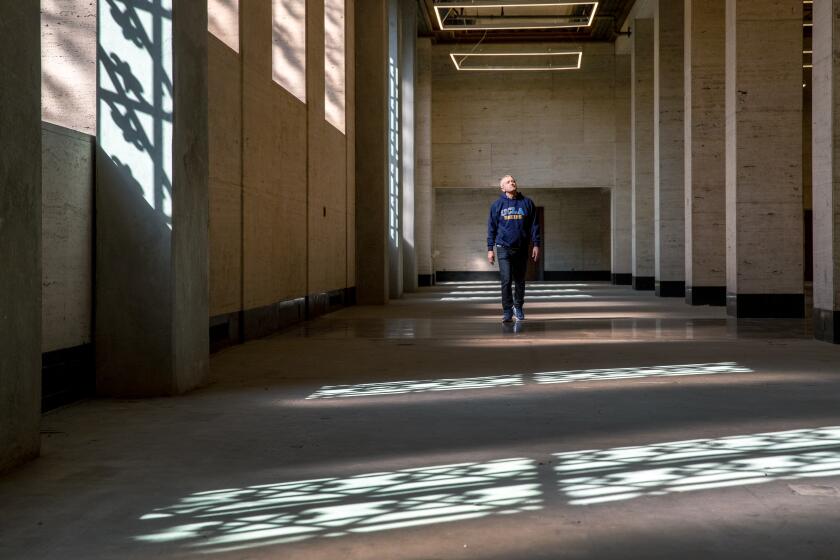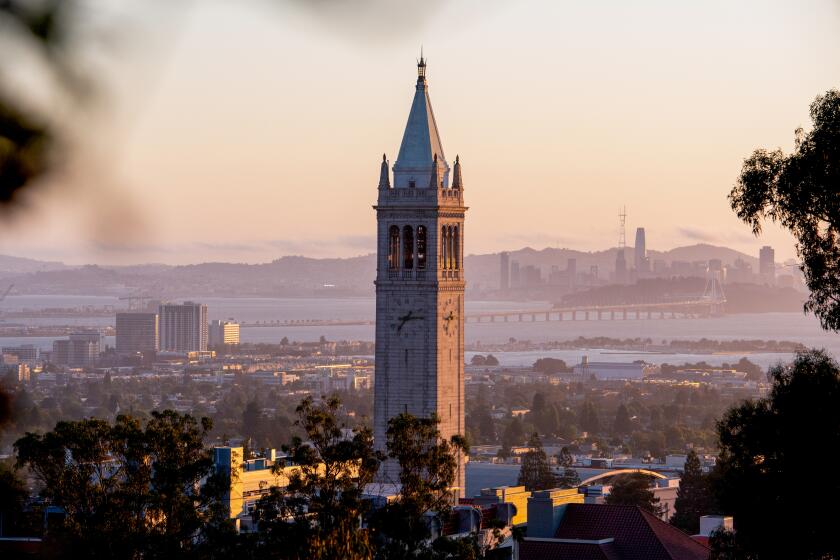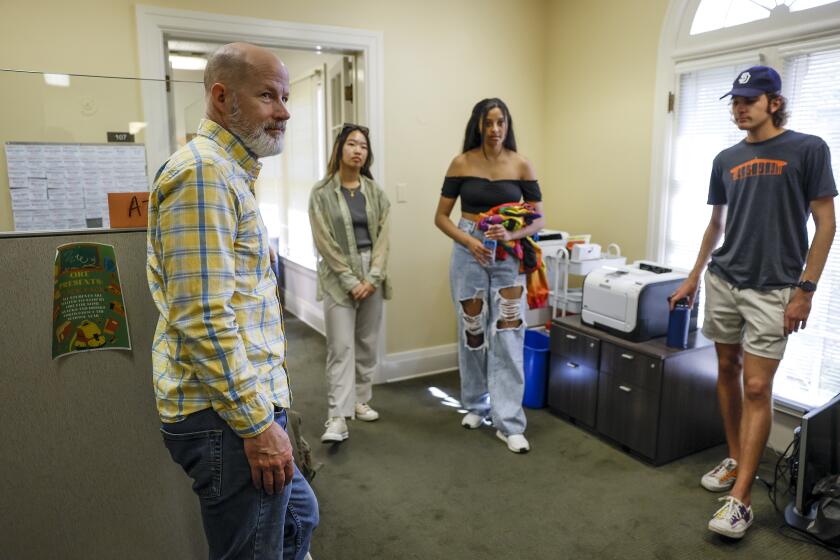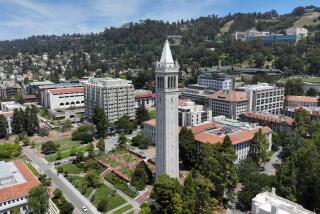Inspiring ‘the next generation of explorers’ fuels big partnership between UC Berkeley, NASA
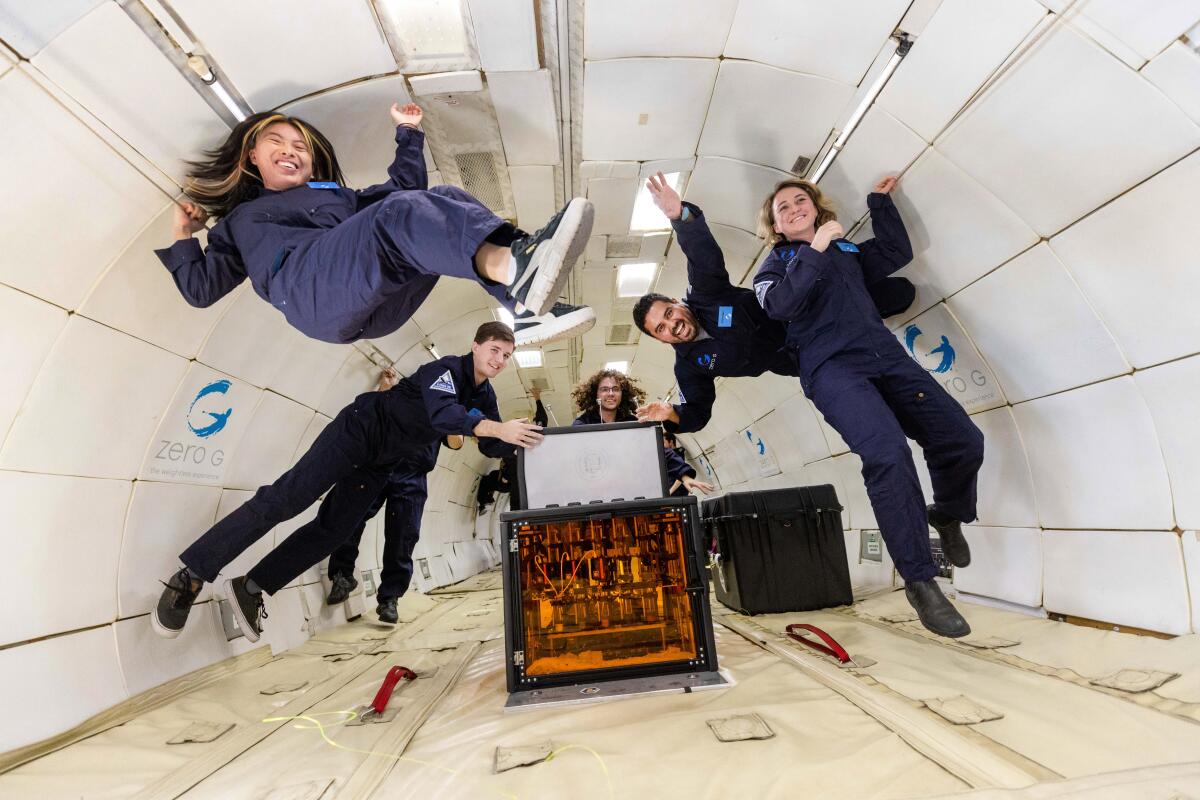
- Share via
Hannah Nabavi remembers how the stars in the night sky mesmerized her as a girl, inspiring awe and humility against the vast cosmos. Now a senior at UC Berkeley, Nabavi continues to pursue that passion for space as an engineering physics major and founder of a campus club to research and develop advanced structures needed in aerospace. Eventually, she hopes to work in the commercial space industry.
She is part of a rising generation of young people drawn to space studies by idealism, research challenges and career opportunities in the fast-growing field. UC Berkeley aims to marshal this interest with plans for a $2-billion, 36-acre space center at NASA Ames Research Center in Silicon Valley, which will feature needed classrooms, laboratories and housing — along with possibilities for collaborative research with NASA scientists and private industry.
“The planned expansion of Berkeley’s physical footprint and academic reach represents a fantastic and unprecedented opportunity for our students, faculty and staff,” UC Berkeley Chancellor Carol Christ said at the project’s unveiling this week. “We are thrilled by the prospect of new collaborations that can speed the translation of research discoveries into the inventions, technologies and services that will advance the greater good.”
The Berkeley Space Center plans to capitalize on burgeoning global interest in space and work so that California stays in the forefront of opportunities. As space exploration pivots from an industry dominated by governments to one increasingly shaped by commercial players — from giant SpaceX to niche start-ups — the $500-billion economy is on pace to surpass $1 trillion by the end of the decade, according to projections by financial institutions and the nonprofit Space Foundation.
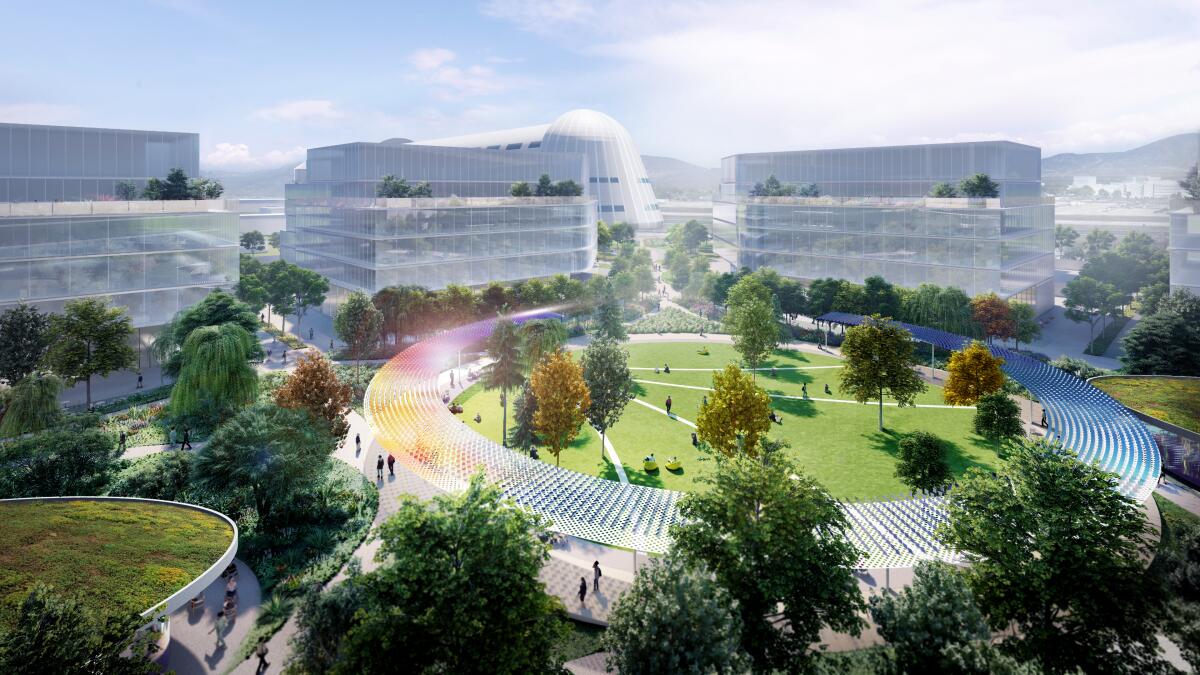
That larger nexus among government, industry and academia is at the heart of the Berkeley center. Discussions to create it began five years ago as NASA Ames has sought to add a major academic presence to its mix of federal and industry researchers at Moffett Field in Mountain View since 2002.
Eugene Tu, NASA Ames director, said the federal agency wanted to be closer to more students to inspire “the next generation of explorers.” Nearly 40% of NASA’s science and engineering workers are age 55 and over and aerospace workforce shortages loom. He said NASA also wanted to better connect with UC Berkeley faculty for potential research partnerships.
UCLA announced plans to expand in downtown Los Angeles with the purchase of the historic Trust Building for satellite classes, a move to widen access at the nation’s most popular university and help revitalize the city’s historic core.
NASA Ames signed a 99-year lease with UC Berkeley, which created a joint venture with SKS Partners, a Bay Area development firm, to help develop the site and secure private industry tenants. UC Berkeley will occupy 10% of the site for starters and eventually enlarge the presence of UC campuses and affiliates to 40%.
UC Berkeley, for its part, has long hoped to build a satellite location to expand its reach beyond its aging, cramped campus. That trend has accelerated at other University of California campuses, which are under pressure to increase enrollment and build more housing, classrooms and laboratories.
In the last 13 months, UCLA has purchased two large parcels of property in the South Bay and another building in downtown Los Angeles. UC Davis is developing a technology campus, “Aggie Square,” in downtown Sacramento. And UC San Diego last year opened a four-story, 66,750-square-foot building downtown as a cultural, educational and business hub.
Darek DeFreece, the UC Berkeley project’s founder and executive director, said the campus envisions offering students a “semester in Silicon Valley” with both academic classes and internships, and possible faculty sabbaticals at the site. He said students and faculty will benefit from proximity to NASA’s researchers and facilities, including the world’s largest wind tunnel and powerful supercomputers. They will also work alongside 25 firms already onsite, such as Google, and new industry tenants.
The project is approved for 300 units of market rate housing, and Berkeley also hopes to add units for students, staff and faculty, DeFreece said. Construction is tentatively scheduled to begin in 2026, pending environmental reviews, but project partners already are working to secure tenants. The university estimates it could bring in $40 million a year in rent, philanthropy, grants and course fees.
Campus officials have begun to look into areas of potential research collaborations that would build on Berkeley’s existing work with NASA operating satellites and building instruments for spacecraft. Areas of interest include how to sustain life in extreme environments such as Mars, protect astronauts from radiation and other health hazards, use 3-D printers to make needed supplies in space and, lower in the atmosphere, develop the automation of electric flying vehicles, said Alexandre Bayen, associate provost who is developing the project’s academic mission.
Claire Tomlin, chair of Berkeley’s electrical engineering and computer sciences department, said Moffett Field will offer an “outdoor testbed” for research in how to integrate drones and other unpiloted aerial vehicles — which are being increasingly used to deliver medical supplies, for instance — into air traffic control systems. She anticipated greater collaborations in such fields as artificial intelligence, electronics and new materials.
Policy questions, such as how to govern business in space and control commercial exploitation, are also drawing interest.
“We’re inventing the future in the new center,” Bayen said.
UC Berkeley is spreading the gospel of data science, a high-demand, high-earning field that can advance social justice, with a proposed new college and free curriculum to schools.
Such cutting-edge ventures have fired the imaginations of many students. To meet the rising interest in the field, UC Berkeley started an aerospace engineering major last year, attracting 2,000 applicants for 80 seats — a 4% admission rate. The campus expects to hire six new faculty members as it expands the program to 250 students, said Panayiotis Papadopoulos, director of aerospace programs in the engineering college who led development of the major. A new degree in aerospace data science is being considered.
UC Berkeley, one of the nation’s top universities for producing start-up founders, has also added an aerospace track to its global entrepreneurship program, called SkyDeck. More than 400 undergraduates are involved in various aerospace-related clubs that build rockets, research flying vehicles, promote career opportunities and other activities, Papadopoulos said.
Papadopoulos said student interest in space education and careers is “the highest I’ve ever seen in my 37 years in this business.”
“Students, in many ways, are dreamers,” he said. “They want to do great things. And they look at space as truly the final frontier and want to have a stake in that.”
Those students include Taylor Waddell, a doctoral student specializing in space manufacturing. He is working with NASA on how to use 3-D printers in space to make needed replacement parts for vessels, such as nuts and bolts, with a process that works better in zero-gravity environments. More futuristically, he is also working with Lawrence Livermore National Laboratory to make cartilage and with the hope of eventually organs with 3-D printers in space, where he said cells reproduce more easily.
Caltech is dropping requirements for high school calculus, chemistry and physics courses for students without access to them and will offer other ways to demonstrate knowledge in those fields.
Ishita Suresh is a third-year undergraduate studying nuclear engineering, electrical engineering and computer science and helped direct a student-led course, “NewSpace Entrepreneurship,” last year. She said students are familiar with “old space” — dominated by NASA, Lockheed, Boeing and other major players — but less schooled in newer, smaller firms working, for instance, with satellite imagery and machine learning to identify environmental hazards or predict wildfires. She and her team also started a fellowship program to share space education with local community college students.
Nabavi, meanwhile, is working with her club, SpaceForm, to research and develop radiation shields and “deployable systems” such as solar sails that can compactly fold up at launch but unfurl to their full form and function in space.
“When students hear about it, they’re like ‘Oh my God, that’s crazy,’” Suresh said of the new space center. “The next big thing we discover in space might be found right here.”
More to Read
Sign up for Essential California
The most important California stories and recommendations in your inbox every morning.
You may occasionally receive promotional content from the Los Angeles Times.
